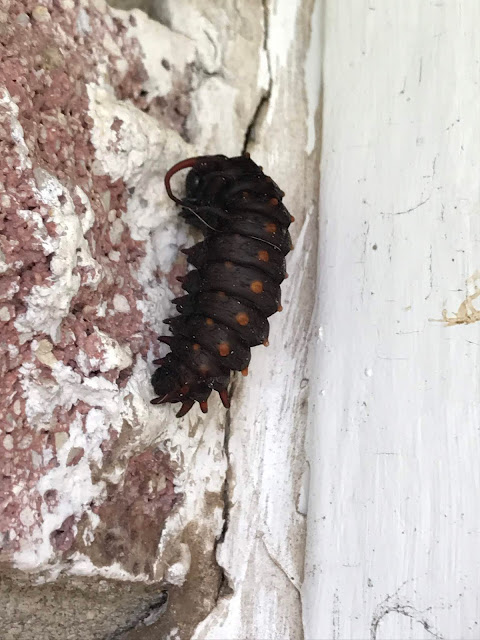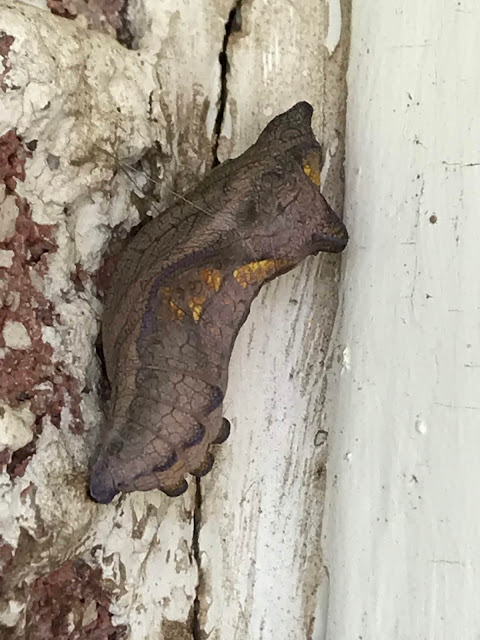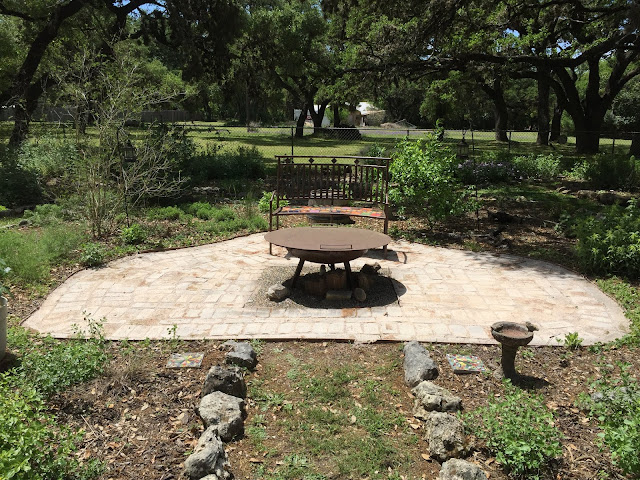
This is yet another cool part of having a blog.
Last December, I received an email from the "other side of the pond." Peter Berresford, a deputy editor with CactusWorld magazine in England, was trying to ID a Texas wildflower and ran across a post on my blog. "I travel every year to the southern states of the U.S. or Mexico," he wrote. "As well as taking many photos of cacti, I also enjoy wildflowers and habitats." He couldn't figure out a pink-flowered plant he'd photographed. I immediately wrote back, gave him the correct name (common and botanical) and mentioned that we had Echinocereus cacti on our land, the same genus that he specializes in and has collected for 50 years.
Long story short, yesterday on our rural land, we met up with Peter, his associate, Dr. Martin Terry, who's a retired biology professor at Sul Ross University in Alpine, and Anna Ermakova, a master student originally from Russia who's studying conservation science at Imperial College London.
"Photographer, surgeon, conservator–that's us!" Martin quipped.
The trio are traveling across Texas, Oklahoma, New Mexico and Arizona, collecting samples from Echinocereus sp. cacti for a Texas Parks and Wildlife Department project centered on the endangered black lace cactus (Echinocereus reichenbachii var. albertii).
Peter via email explained the project this way: "The number of known locations is slowly increasing away from the Gulf Coast, but the morphology of the plant is much more variable in the inland locations, and we want to understand the relationship of all these populations to the two most local 'sisters'–the comparatively rare E. fitchii subsp. fitchii but also E. reichenbachii subsp. caespitosus. In April, we will visit many sites and take tepal samples from the flowers, from which will be extracted isoenzymes. These will be analyzed and compared to see how genetically close each population and taxon is. From the results, we hope to have a better understanding of how the taxa developed and how they spread."
Here's a page that explains a bit about what's going on with this cactus.
As part of this spring 2019 trip, the group searched for a black lace cactus near Alice, Texas. "Dr. L. D. Benson and Dr. R. O. Albert found the first individuals in 1965 in Jim Wells County," Martin told me. "We were hoping to find another individual near the original sites where they were found. We hunted for three days but found nothing due to land changes. Fields get plowed, and nothing's left. So we didn't get lucky."
 |
| Martin showing us how you can nearly hug a cactus. |
Since our cacti had either already bloomed or not yet bloomed, Martin (the surgeon) extracted samples from three plants. Peter (the photographer) took lots of pictures of the cacti and surrounding plants, including wildflowers.
Anna (the conservator) placed the samples in plastic bags and took lots of notes. All told, they stayed about an hour before they took off for Mason and destinations further north. Ultimately, they'll deliver their collection of samples to the Desert Botanical Garden in Phoenix, where specialists will analyze the plants' DNA sequences to better differentiate species from subspecies.
James and I were honored to have been a part of this research project. Y'all come back any time!
P.S. As a side note, two other nature-related individuals have contacted me via this blog. An author working on a new field guide to bird nests of North America may use some of James' photos of nests he's photographed on our rural land. And a researcher in Germany has requested that I collect some Phaedon beetles for a project that he's working on. COOL!






















































